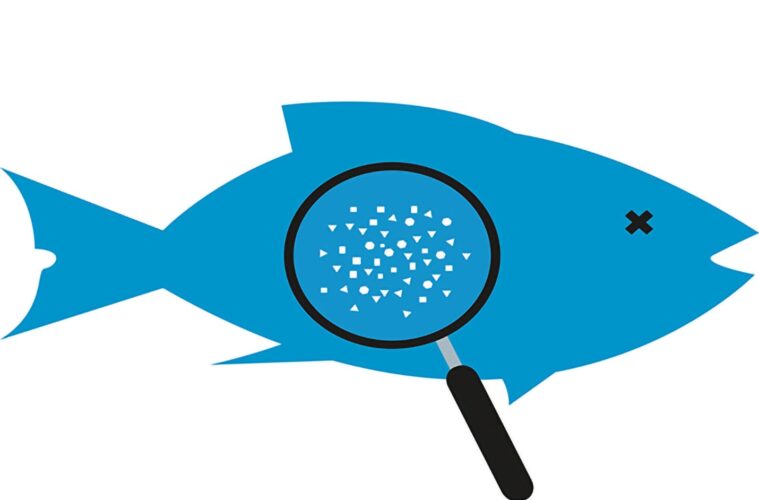From a young age, Linda Tseng has been picking up trash, the assistant professor of environmental studies and physics told Colgate community members during her February colloquium.
“However, as I have grown older, I have come to realize that cleaning up plastics is not always so simple as tossing a water bottle in the recycling. There are many pollutants that we cannot see.”
Tseng has dedicated herself to researching the issue of invisible pollutants such as microplastics and the impact they have on our bodies, ecosystems, and the world at large. While pollutants are undoubtedly a global issue, Tseng brought awareness of the crisis closer to home by elaborating on recent tests she has been conducting on water from the Hamilton area. Throughout her research, Tseng tested for a wide range of pollutants in various contexts.
Through graphs and charts documenting the number of pollutants found in water, Tseng elaborated on the variety of invisible pollutants affecting human beings today. These include the chemicals found in medications like Tylenol and the chemicals in perfumes.
Tseng has been studying the wastewater treatment systems in Hamilton and has gained a firsthand understanding of just how much of these chemicals make it past the county’s filtration system each day. Her findings reveal that, although some chemicals like those found in Tylenol are largely removed from the water supply during the filtration process, other pollutants such as fragrance enhancers and plastic additives slip through intact.
From similar testing of natural water sources in the Hamilton area such as streams, Tseng explained that she has found worrying amounts of pollutants, including consistent plastic additives and high levels of toxins like 2-Mercaptobenzothiazole deposited by runoff from septic tanks and 6PPD-Quinone from car tires.
“Plastics can be found everywhere. They’re in the London air, the Belizean seagrass, and the deepest trenches of our ocean. More close to home, they’re in our drinking water, our agricultural fields, our placentas, and even our feces.”
Through a series of case studies, Tseng highlighted just a few of the adverse effects that these invisible microplastics have on the world’s ecosystems today.
“Microplastics can make the environment more hospitable to invasive species, they can be consumed by deep-sea creatures and serve to slowly poison them, and recently, we have even been seeing microplastics negatively impacting humans by enriching antibiotic-resistant pathogens and making us all more susceptible to disease.”
Tseng then shared a few sustainable habits we can adopt to reduce or offset the amount of microplastics in the environment. Just a few of these steps toward sustainability include picking up litter, using delicate wash to clean clothes, choosing loose leaf tea over tea bags, and avoiding Tseng’s “personal plastic enemy,” glitter.
Saving the world from microplastics is not a one-person job, Tseng continued, nor is it a burden solely for consumers to bear. Rather, plastic manufacturing corporations and the companies that rely heavily on their products need to be the ones making the greatest strides toward sustainability.
Some companies are finally starting to pay attention. For example, LEGO has recently made the ambitious goal to make all of its packaging out of renewable or recyclable materials by 2025 and all of its products from sustainable materials by 2030.
“They can’t make LEGOs safe to step on,” joked Tseng, “but at least by 2030, that pain will be sustainable!”

